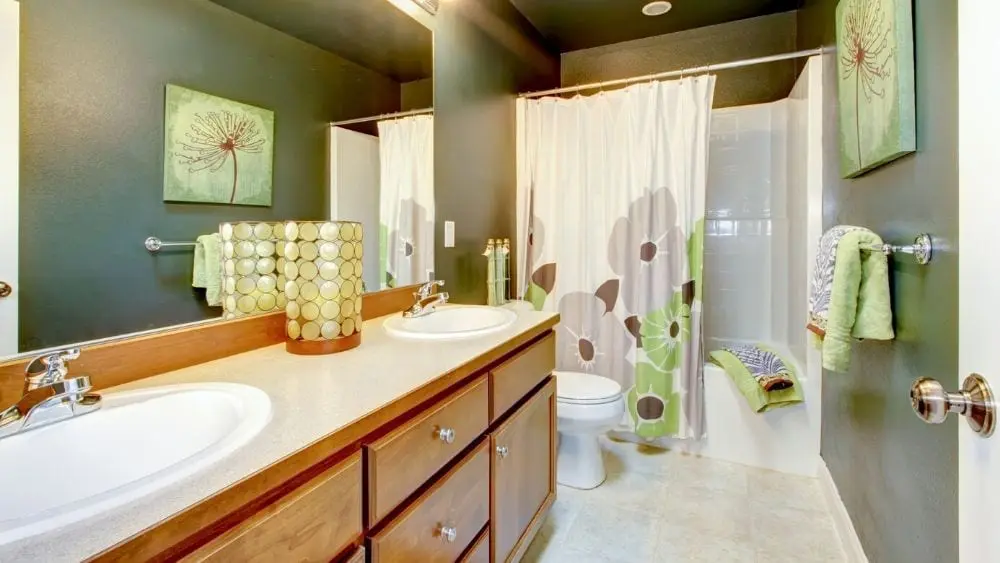
Frequently, more U.S. families are choosing to live together in multi-generational households. This could mean your adult child and grandkids live under your roof, or you’ve moved your senior mom in.
With more people living in the same house who possess different levels of mobility, more and better-outfitted bathrooms top the list of must-haves for homeowners.
AARP research suggests 80% of falls occur in the home. Further, they found 59% of fall injuries among older persons were caused by slipping, tripping, or stumbling. With the bathroom being one of the most accident-prone areas of the home, it should be at the top of your list when building or redesigning your home for multi-gen living.
With family members living longer and aging in the home, it’s a must to focus on universal bathroom elements to support ease of use, accessibility, and adjustability for future use. From minimizing slipping hazards to maximizing areas of movement, there are many ways to eliminate dangerous elements while adding safety features to your bathrooms.
With the right plan and a skilled contractor, safety and ease of use can be achieved without sacrificing style.
With that in mind, we’ve curated a list of the top fifteen must-have elements to consider when designing your multi-gen friendly bathroom.
1. Comfort-Height Toilet
Two inches taller than the standard-height toilet, comfort-height toilets sit 17 to 19 inches from the floor. Two inches may seem insignificant, but the extra inches can help those who have trouble sitting and rising as well as making the lid and seat easier to reach.
2. Shower Bench or Bath Chair
Providing a place to sit in the shower is a must for all users. Access to a bench or chair while showering provides safety and usability to those with physical limitations. As well, a bench comes in handy when shaving your legs or scrubbing your feet.
3. Side-Entry Tub
The walk-in tub offers special features such as an outer opening side door and ultra-low threshold. These essential safety designs keep pressure off the feet, prevent slips, and negate the need to climb over the bathtub’s side. Many side-entry tubs include an ergonomic seat inside to allow the user to sit while bathing.
4. Walk-In Shower
Low or no-threshold showers accommodate all users regardless of the level of mobility. Walk-in showers with no threshold and a doorless design can offer the optimal showering experience for those with mobility issues. Additionally, these designs are highly popular with their contemporary design and spa-like style.
5. Grab Bars
The ultimate bathroom safety device, grab bars can be added in the shower, bathtub, and by the toilet. They are ideal for assisting older parents and children with balance.
6. Levered Handles
Easier to open than standard doorknobs, levered handles installed on bathroom doors will assist those with weak grips or hand issues.
7. Touchless Taps
A touchless tap faucet provides an easier to use and more hygienic user experience. There are many contemporary and traditional style touchless tap designs available to suit all decors.
8. Varying Height Sinks
Various height sinks are required for ambulatory adults and children and family members who use wheelchairs. Wall-mount sinks allow for multiple heights to be accommodated. For those who have room, two vanity sink cabinets in two different heights will also make the same accommodations.
9. Non-Slip Floors
Install anti-slip flooring to ensure safety when floors are wet. Choose products that have textured and rough surfaces. Many tile and stone products are available with slip-resistant properties in beautiful designs. This allows you to have safe flooring without sacrificing style.
10. Keyed Door Lock
To avoid elderly adults and children from getting locked in the bathroom unintentionally, install a keyed door lock on the bathroom door. Keep the key accessible for when the situation might arise that you need to unlock the door from the outside.
11. Pocket Doors or Outward Swinging Doors
Giving special consideration to door swings will provide family members with easy ingress and egress of the bathroom. Pocket doors that easily slide into the wall provide an ideal solution. Outward swinging doors can also provide easy entrance and exit from the room.
12. Increased Clearances
If your space allows, opt for at least 36 inches for the doorway clearance to accommodate mobility devices such as wheelchairs and walkers. Additionally, increase accessibility further by leaving 36 inches from shower to toilet to sink. It is also ideal to include enough space in the center of the bathroom for a 5-foot diameter turning circle for wheelchair users to execute a complete turn.
13. Tilt Mirrors
Mirrors with the ability to tilt down are useful for accommodating wheelchair users and children. These specialty mirrors come in a myriad of styles from minimalist to rustic.
14. Jack and Jill Design
This classic bathroom design allows for multiple users to perform different functions at once. A jack and jill bathroom design includes a central shower or bath area accessed through two doors, one on each side. each leading to separate sink and toilet areas. This type of bathroom is ideal when situated between two bedrooms.
15. Color & Surface Contrast
To allow family members with vision problems to navigate the bathroom safely using contrasting colors is a must. For example, if the floor is bright white tile, then consider finishing the cabinets in a darker color. As well, you can paint areas of use in different colors, such as a bright accent wall beside the toilet and another by the shower.
Interested in creating a multi-gen bathroom in your home? Click on the following links for more information about multi-gen living, universal design, and inclusive design from NewHomeSource.com.

Joanna Dorman is a freelance writer with over 16 years of experience creating interior design, home building, home improvement, and real estate content. Additionally, she has 15 years of field experience in the interior design industry and trained in interior design at the Art Institute of Houston.
 How to Grow Your Own Food: 8 Tips to Get Started on Backyard Gardening
How to Grow Your Own Food: 8 Tips to Get Started on Backyard Gardening